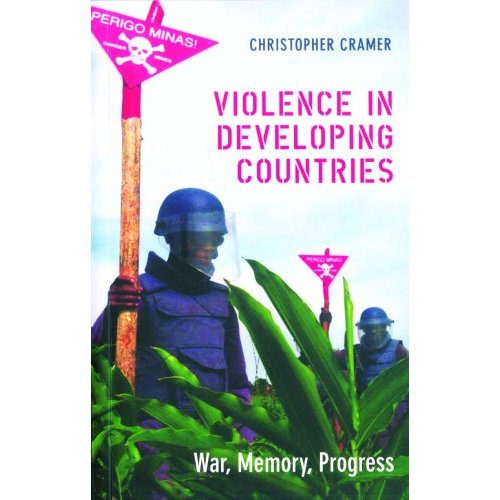Ilankai Tamil Sangam28th Year on the Web Association of Tamils of Sri Lanka in the USA |
|||
 Home Home Archives Archives |
Violence in Developing CountriesWar, Memory, Progressby Bruce Hamilton, SANGONet, date unknown
Violence in Developing Countries – War, Memory, Progress by Christopher Cramer, February 2007, ISBN-10: 0253219280, Indiana University Press Cramer takes issue with several perspectives on violence in particular:
He challenges theories that emphasize a single causal factor in violence, explaining that available data lead to inconclusive results on the effects of resource scarcity, resource abundance, inequality and ethnicity on the probability of violence occurring. The reliability of the data itself is also thoroughly questioned, considering the extreme difficulty of collecting accurate information, especially in times of war. In debunking the liberal perspective on violence -- which holds that where liberal democracy has taken hold peace has followed, and that violence in developing countries is the result of failing development -- Cramer points to what he says is the West's historical amnesia, a forgetting of the role of violence in establishing the foundation of development of many of today's high income countries, as well as a denial of the violence still prevalent in the Western world. Cramer argues against the notion that violence is categorically negative, claiming instead that "violence destroys but is also often associated with social creativity": it is destructive, yes, but can bring positive change. Cramer does not advocate violence or claim that it is necessary for progress; instead, he insists on "the possibility of progressive change without violence while not denying that violent conflicts, when they happen, can, but do not always, have progressive consequences." When violence does occur, the task is to minimize the destruction while maximizing the potential for positive changes. The book's conclusions pose challenges for policymakers, scholars, economists and all those concerned about global violence. Cramer is attempting to demonstrate that the hypocrisy and double standards of the West, combined with the oversimplified and unreliable theories and models put forth by scholars, have contributed to poor policy and poor understanding of the causes and consequences of violence. Rather than adhering to overly specific and arbitrary classification systems that fail to take into account the particular and diverse social, economic, political, ethnic and historical factors that lead to each occurrence of conflict, Cramer calls for an attempt to identify broad "family resemblances" of war that, while highlighting similarities between conflicts do not conceal their unique circumstances. By adopting a more sophisticated view of violence, governments and citizens will be better prepared to cope with and prevent conflict. Cramer succeeds in creating not only a convincing book, but also a readable one. He seamlessly blends erudite and academic discussions of theory and economics with historical narratives and vibrant examples. It is this style, this adherence to meticulous detail while retaining sight of the larger picture, that gives this book its strength. Cramer draws from numerous examples of violence to illustrate his argument: Angola, Mozambique, Iraq, Rwanda, Burundi, Afghanistan, the Congo, Brazil, Nazi Germany, among many others. He fleshes out his examples, providing a depth and breadth of information necessary to back up his far-reaching claims. Violence in Developing Countries is, above all, an important book. Examining the possibilities of "positive" outcomes of violence and rejecting the idea that peace is always best for "development" can certainly be uncomfortable. Yet taking a new perspective on violence, especially at a time when the war on terror continues and conflicts grip vast populations, offers a way to reexamine assumptions and refine policy to better address conflict. -------------------------------------------- Table of ContentsPreface and AcknowledgmentsIntroduction: A Whiff of Angola 1. Violence, Memory, and Progress 2. Categories, Trends, and Evidence of Violent Conflict 3. Deviant Conditions 4. Angola and the Theory of War 5. How to Pay for a War 6. Passionate Interests 7. The Great Post-Conflict Makeover Fantasy Conclusions
| ||
 As violence and war grip societies all over the world, social scientists, economists and scholars are rushing to answer the question "why?" Several explanations of the causes of violence have emerged and gained popularity, but in Violence in Developing Countries, author Christopher Cramer says many of the prevailing theories are getting it wrong.
As violence and war grip societies all over the world, social scientists, economists and scholars are rushing to answer the question "why?" Several explanations of the causes of violence have emerged and gained popularity, but in Violence in Developing Countries, author Christopher Cramer says many of the prevailing theories are getting it wrong.